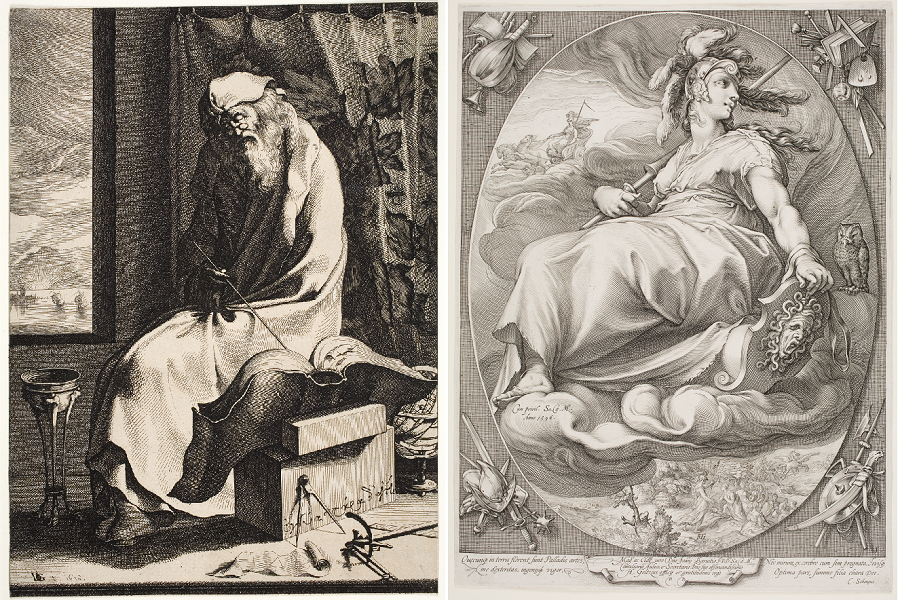
Jacques de Gheyn III, Thales of Miletus, from the series The Seven Wise Men of Greece, 1616 (left)
Hendrick Goltzius, Minerva, from the series Three Goddesses in Clouds, 1596 (right)
Philosophers, Muses, and Gods
This exhibition addresses how the medium of print facilitated multidisciplinary engagement with Greco-Roman antiquity among Dutch and Flemish scholars, students, and art collectors during the early modern period. For centuries, Greek and Roman texts had circulated only in manuscripts that were laborious to copy by hand and financially out of reach for all but monarchs, clerics, and the nobility. As printing technology advanced over the course of the early modern era, book publishers offered greater access to classical writings on philosophy, law, science, history, military strategy, art, and literature. By the sixteenth century, classical studies shaped the curricula of secondary schools and universities in the Low Countries, and artists began producing finely rendered engravings that gave visual form to the texts taught within those institutions. Often accompanied by Latin inscriptions crafted by humanist scholars, these prints appealed to erudite collectors who assembled them within albums.
Philosophers, Muses, and Gods features sixteenth- and seventeenth-century prints by Adriaen Collaert, Bartholomeus Spranger, Jan Saenredam, Hendrick Goltzius, and Peter Paul Rubens. Loans from Wellesley College Special Collections include critical editions of Hesiod, Tacitus, Julius Caesar, Seneca, Cicero, Pliny, Ovid, and Terence, as well as works by early modern humanists Justus Lipsius, Franciscus Junius, and Anna Maria van Schurman.
This exhibition is curated by Heather Hughes, Kemper Assistant Curator of Academic Affairs and Exhibitions.
The Davis Museum is free and open to all. All visitors are required to register in the Davis lobby, show proof of full COVID-19 vaccination, and mask while in the galleries.
afears@wellesley.edu
the Marjorie Schechter Bronfman ’38 and Gerald Bronfman Endowment for Works on Paper with special thanks to Wellesley College Special Collections.
Museum Purchase 1992.1 (left)
Bequest of Ann Kirk Warren (Ann Haggarty, Class of 1950) 2016.520 (right)
